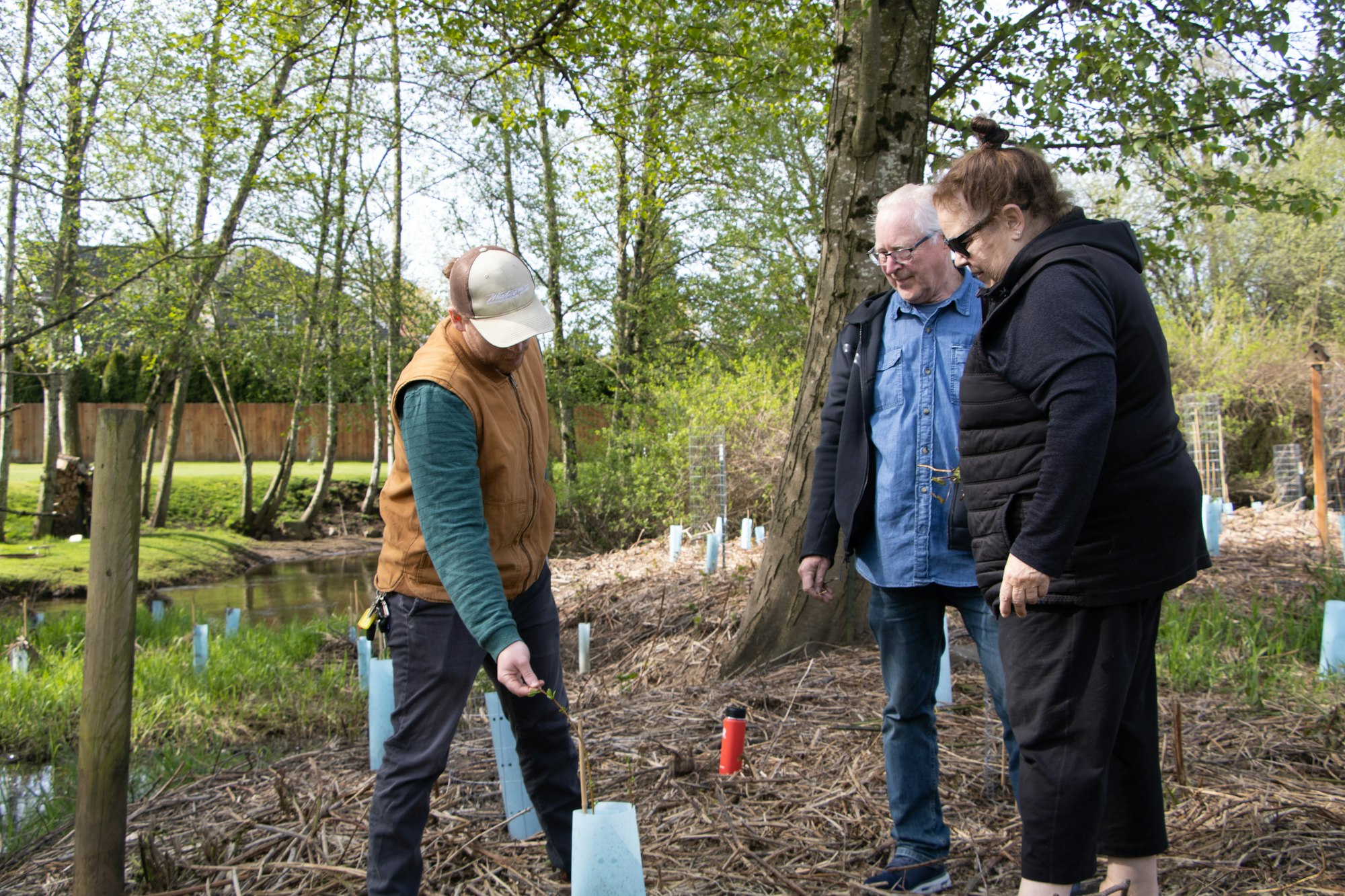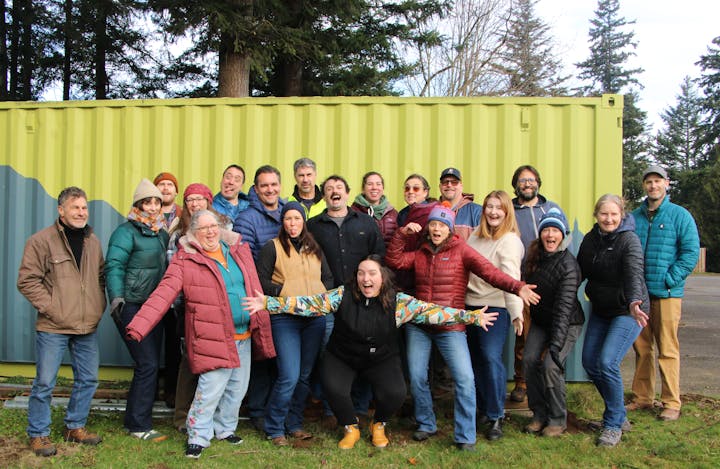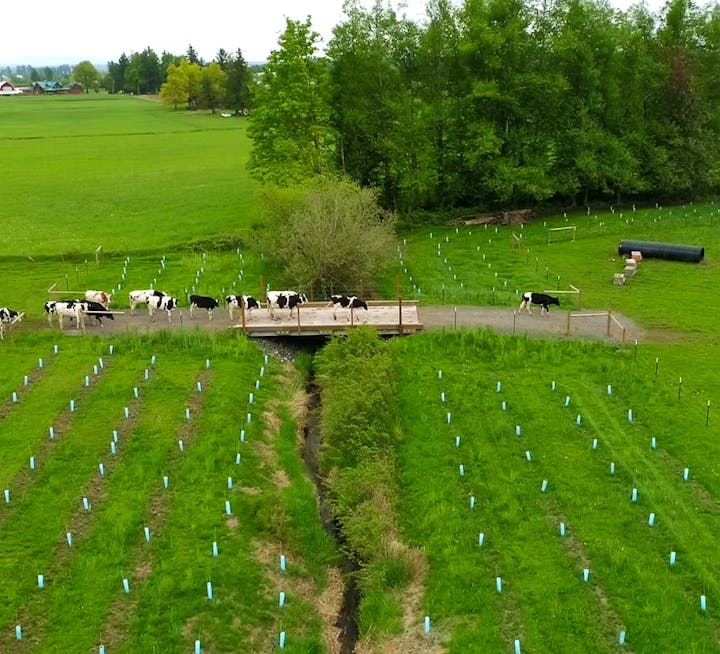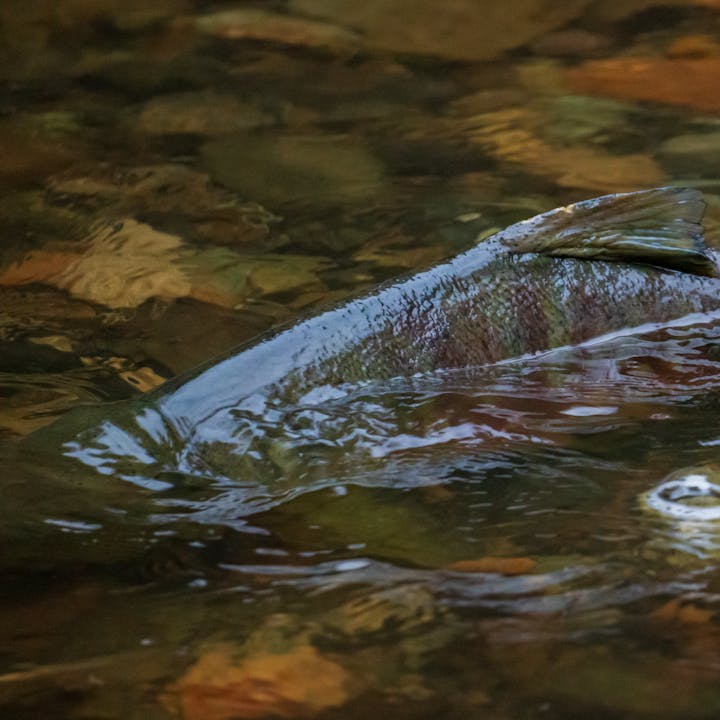Riparian Restoration

The Riparian zone is the area along the banks of streams. Riparian habitat restoration projects are crucial for restoring healthy ecosystems and conserving biodiversity. Removing invasive species along streams and replacing them with native plants improves water quailty, stream temperature through increased shade, biodiversity of fish and other wildlife, reduces erosion, and can reduce flooding. Whatcom CD offers planning, planting, funding, and maintenance for riparian restoration.
Riparian Restoration Planning Services
Whatcom CD staff are trained and experienced to assess streamside habitat and suggest actions that can improve habitat on your property. Most restoration begins with a free, confidential and non-regulatory site visit. Whatcom CD staff will meet with you at your property, walk the land with your, and listen to your plans and goals for your property. Staff can then assist with resources to help you reach your goals. If your property qualifies for a restoration project funded through Whatcom CD, staff will help with any permitting or paperwork needed from other agencies.
Funding
Whatcom CD offers funding for riparian restoration projects that covers the planning, planting, and maintenance.
Planting
If your property qualifies for a funding riparian restoration project, Whatcom CD staff will plan and purchase any plants needed for the planting. However, private contractors or a conservation corps crew of young adults will be selected to do the actual planting work.
Maintenance
Grass and blackberries will need to be mowed and controlled prior to planting and for several years after planting to reduce competition for soil moisture and nutrients. Whatcom CD provides funding for continued maintence of the projects until the native plants are established.
Benefits of Riparian Restoration
- Restoring & protecting critical fish habitat
- Increasing & protecting water quality
- Providing attractive borders
- Stream bank stabilization
- Increasing privacy
- Increasing protection from noise & wind
- Carbon sequestration
- Creating travel corridors for a wide range of wildlife
- Reducing erosion
- Lowering water temperature
- Invasive species removal
- Creating shade
- Active ecological stewardship






